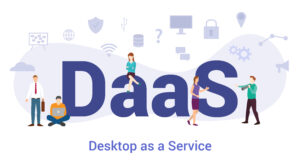As the digital landscape in Asia-Pacific rapidly evolves, real-time data analytics are becoming indispensable for businesses looking to thrive amidst the whirlwind of change. Harnessing real-time insights empowers enterprises to act swiftly and capitalize on emerging opportunities. This is crucial in a region where customer expectations and market dynamics shift continually. With IoT and AI enhancing data capture and analysis capabilities, companies can drive greater agility. Let us explore how real-time data analytics enables organizations across Asia-Pacific to respond with flexibility and remain competitive in an era of relentless disruption. Equipping businesses to adapt in real-time is fundamental to succeeding in this dynamic region.
The Rise of Real-Time Data Analytics in APAC
Businesses in Asia-Pacific rely heavily on real-time data analytics to gain actionable insights and make quick decisions. Real-time data analytics involve processing data as soon as it is generated to enable prompt analysis and action. This capability is crucial for companies to respond rapidly to market changes and address customer needs in today’s fast-paced business environment.
Growing Adoption of IoT and AI Technologies
- The adoption of IoT and AI technologies in APAC has fueled the demand for real-time data analytics. Connected devices such as sensors generate massive amounts of data that need to be analyzed instantly. At the same time, AI systems require real-time data to function properly and help businesses automate processes and personalize customer experiences. The widespread use of IoT and AI in manufacturing, healthcare, and retail industries is driving more companies to implement real-time data analytics solutions.
Need for Agility and Personalization
- With intensifying competition, businesses in APAC need to be highly agile to gain a competitive advantage. Real-time data analytics allow companies to detect opportunities and threats quickly, support faster decision-making, and pivot strategies in real-time. They also enable a high degree of personalization by giving businesses a 360-degree view of customers based on data from multiple touchpoints. This real-time personalization helps to build loyalty and boost customer lifetime value.
Partnerships and Investments on the Rise
- To reap the benefits of real-time data analytics, many APAC companies are forming partnerships with solution providers and investing in new technologies. Cloud-based analytics platforms and tools that can handle huge data volumes and support real-time processing are in high demand. At the same time, businesses are collaborating with data analytics service providers to help implement solutions, manage data streams from multiple sources, and generate actionable insights instantly. These partnerships and investments signal the increasing importance of real-time data analytics for business agility and success in APAC.
Key Drivers of Real-Time Data Adoption in Asia Pacific
Growing Demand for Personalised Experiences
- In APAC, customers increasingly expect personalized experiences across sectors. Real-time data analytics enable companies to gain insights into individual customers and tailor offerings to their needs and preferences. For example, retailers can provide product recommendations based on a customer’s browsing and purchase history. Telecom companies can bundle data packages based on a customer’s data usage patterns.
Transition to Data-Driven Business Models
- Many APAC companies are transforming their business models to leverage data as a key asset. By analyzing real-time data, companies gain visibility into business performance and customer behavior. They can then make data-informed decisions to optimize key business metrics like increasing operational efficiency, reducing costs, and driving revenue growth. For instance, manufacturers can predict demand patterns to optimize inventory and supply chain management.
Growing Adoption of IoT and AI
- The increasing use of IoT devices and AI in APAC generates huge volumes of real-time data. IoT devices can automatically collect data on machine performance, environmental conditions, and user behavior. AI technologies like machine learning are then used to analyze this data and gain actionable insights for businesses. For example, energy companies can leverage smart meter data to forecast demand, identify network issues, and improve customer service.
In summary, the demand for personalized customer experiences, the transition to data-driven business models, and the adoption of IoT and AI are the key drivers propelling real-time data analytics in APAC. Companies that can harness real-time data insights will gain a competitive edge and reap significant business benefits.
Real-Time Data Analytics Use Cases Across Industries

Enhancing Customer Experience
- Companies can gain valuable insights into customer behavior, preferences, and pain points through real-time data analysis. For example, e-commerce platforms can provide personalized product recommendations based on a customer’s browsing and purchasing history. Retail stores can optimize product placement and in-store navigation based on traffic patterns captured through video analytics and Wi-Fi networks. These data-driven enhancements to the customer experience build brand loyalty and boost sales.
Optimizing Operations
- Manufacturers and logistics companies are using real-time data to streamline operations and supply chains. Sensors attached to machinery and vehicles generate data on performance, utilization, and movement which is analyzed to identify inefficiencies and opportunities for improvement. For example, an analysis may show that a factory’s productivity declines during a specific shift, or a delivery route can be shortened by 10%. Actioning these insights results in substantial cost savings and higher output.
Enabling Predictive Maintenance
- Real-time data analytics are essential for predictive maintenance, where businesses monitor equipment and infrastructure to anticipate and prevent failures. Analysis of data from sensors can detect small changes in temperature, vibration, or other metrics that indicate potential issues. For example, an airline may monitor aircraft engines in real-time during flights to schedule preventative maintenance and avoid delays or cancellations. A utility company may monitor power lines and transformers to pinpoint those at risk of overheating and failing. Predictive maintenance reduces costs by minimizing unplanned downtime and avoiding catastrophic equipment failures.
In summary, real-time data analytics are transforming businesses and driving agility through enhancing customer experiences, optimizing operations, and enabling predictive maintenance. Companies able to harness real-time data insights will gain a competitive advantage with a data-driven approach to decision-making. The future is bright for real-time analytics in APAC.
Challenges of Implementing Real-Time Analytics
Data Integration
- Integrating data from diverse sources in real-time poses significant challenges. Data is often siloed across business units and functions, stored in different formats, and lacks consistency. To enable real-time analytics, organizations must develop capabilities to ingest, cleanse, and integrate data from internal and external sources, including IoT devices, in a rapid and automated fashion. This requires substantial investments in data engineering and the adoption of modern data integration tools and architectures.
Skills Shortage
- There is a chronic shortage of data scientists and engineers with skills in areas such as data visualization, AI, and cloud computing. Hiring and retaining top talent is difficult given the high demand and competition from technology companies. Upskilling existing workforces will take time and resources. Partnering with external service providers is an option to overcome talent gaps in the short term.
Legacy Technology Constraints
- Many APAC organizations still rely on legacy data infrastructure and applications that were not built for real-time data processing. Migrating to modern cloud-based data platforms is capital-intensive and risky. However, without flexible and scalable infrastructure, real-time analytics initiatives will face performance and cost issues. A hybrid approach, combining public cloud and on-premise solutions, may offer a more practical solution for some.
Data Governance Challenges
- With greater data volumes and sources, data governance becomes both more important and more difficult. Policies and controls are required to ensure data quality, privacy, and security. Master data management helps create a single source of truth. However, implementing governance frameworks and tools is often complex, requiring business and IT collaboration. A lack of governance can undermine the value of real-time data analytics investments.
In summary, while real-time data analytics offer significant benefits, APAC organizations face several obstacles to implementation. With a focus on skills, technology, data, and governance, firms can overcome these challenges and gain a competitive edge through data-driven, real-time decision-making. But this will require vision, investment, and patience to do so.
Best Practises for Leveraging Real-Time Data Analytics in APAC
To optimize real-time data analytics, APAC organizations should implement the following best practices:
Invest in Robust Data Infrastructure
- A scalable data infrastructure that can handle high-volume, high-velocity data is essential. Cloud-based solutions offer cost-effective scalability and flexibility. They enable quick deployment of resources to support real-time analytics use cases.
Embrace an Agile Approach
- Traditional waterfall methods are too slow for real-time analytics projects. Agile methods, with their focus on fast iterations and continuous improvement, are better suited. Cross-functional teams should work closely with business stakeholders to determine key performance indicators and metrics to monitor.
Choose the Right Tools
- Powerful tools for streaming, storage, and analysis are required. For streaming, options include Apache Kafka, Amazon Kinesis, and Azure Event Hubs. For storage, Apache Cassandra, MongoDB, and HBase are good choices. For analysis, Apache Spark, Flink, and Storm are recommended. These tools enable rapid data ingestion, storage, processing, and analysis.
Hire Data Science Talent
- Real-time analytics require scarce data science skills like statistics, machine learning, and programming. Hiring data scientists, data engineers, and business analysts with experience in real-time use cases is key. Upskilling existing talent through partnerships with analytics institutes and online course providers can also help address the skills gap.
Continually Optimise and Improve
- Real-time analytics projects should be monitored and tweaked continually to improve speed and accuracy. Teams should measure metrics like data latency, predictive accuracy, and business KPIs impacted. Comparing performance over time highlights areas needing improvement. With regular optimization, real-time analytics systems become more robust, scalable, and impactful.
In summary, robust data infrastructure, agile methods, powerful tools, data science talent, and continuous optimization are the five best practices APAC companies should adopt to drive success with real-time data analytics. By following these practices, organizations can achieve the speed and business agility needed to compete in today’s fast-paced markets.
Summing It Up.
You can see how real-time data analytics are transforming businesses and entire industries across APAC, providing the agility and responsiveness required to thrive in today’s fast-paced world. By implementing the latest technologies like IoT and AI, companies gain actionable data insights instantly. This allows them to course-correct in real-time, meet evolving customer demands, get ahead of competitors, and capitalize on fleeting opportunities. The potential benefits are immense, from boosted productivity and efficiency to reduced costs and risks. To remain competitive now and in the future, APAC enterprises must embrace real-time data analytics. The time to act is now.
More Stories
Denodo 9.2: Revolutionizing Data Marketplaces with GenAI and Self-Service Innovation
In the fast-changing data management landscape, Denodo Platform 9.2 stands out as a major innovation. It sets new standards for...
Snowflake Invests in RightRev to Add Revenue Accounting Automation to the AI Data Cloud
Snowflake has made a key move by investing in RightRev. RightRev leads in revenue recognition automation. This strategic alliance aims to enhance Snowflake’s financial operations within its AI Data Cloud.
Skype Signs Off: The End of an Era in Digital Communication
As you reflect on the digital landscapes that have shaped the way we communicate, the farewell to Skype on May...
Pixels with Purpose: OpenAI’s GPT-Image-1 API Redraws the Boundaries of Visual AI
OpenAI’s latest innovation, GPT-Image-1, is not just another image generation model; it’s a paradigm shift in how we create and interact with visual content.
Firefly Ignites: Adobe’s AI Leaps to 2K Imagery and 1080p Video Creation
The introduction of Firefly Image Model 4 and Image Model 4 Ultra represents a significant leap forward in AI-generated imagery, offering you unprecedented control and quality.
Opera Mini Empowers 100M Users with Free AI Assistant, Bridging the Digital Divide
Notably, the company integrated the AI assistant Aria into Opera Mini. Now, users gain advanced artificial intelligence access—no matter their location or internet quality. This strategic move empowers more than 100 million users globally. Particularly, it helps people in areas where high data costs previously limited online participation.


